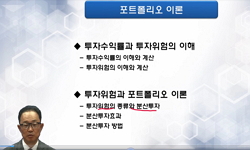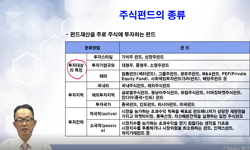이 연구는 2004년 7월부터 2014년 6월까지 10년 간 한국 펀드시장에서 거래된 KOSPI200 인덱스펀드의 규모, 수익률, 보수 및 수수료, 포트폴리오 정보 등을 이용하여, 인덱스펀드의 성과특성을 분...
http://chineseinput.net/에서 pinyin(병음)방식으로 중국어를 변환할 수 있습니다.
변환된 중국어를 복사하여 사용하시면 됩니다.
- 中文 을 입력하시려면 zhongwen을 입력하시고 space를누르시면됩니다.
- 北京 을 입력하시려면 beijing을 입력하시고 space를 누르시면 됩니다.
https://www.riss.kr/link?id=A103343999
- 저자
- 발행기관
- 학술지명
- 권호사항
-
발행연도
2016
-
작성언어
Korean
-
주제어
규모효과 ; 성과특성 ; 인덱스펀드 ; 초과성과 ; 포트폴리오 ; Abnormal Return ; Index Fund ; Performance Characteristics ; Portfolio ; Size Effect
-
KDC
32
-
등재정보
KCI등재,SCOPUS
-
자료형태
학술저널
- 발행기관 URL
-
수록면
1035-1074(40쪽)
-
KCI 피인용횟수
2
- 제공처
-
0
상세조회 -
0
다운로드
부가정보
국문 초록 (Abstract)
이 연구는 2004년 7월부터 2014년 6월까지 10년 간 한국 펀드시장에서 거래된 KOSPI200 인덱스펀드의 규모, 수익률, 보수 및 수수료, 포트폴리오 정보 등을 이용하여, 인덱스펀드의 성과특성을 분석하였다. 주요결과는 다음과 같다. 첫째, 지수를 추종하기 때문에 각 펀드들의 수익률이 서로 비슷할 것이라는 예상과는 달리, 매년 말 측정한 12개월 누적수익률의 횡단면 분포에서 최대값과 최소값의 차이가 3%~13%에 이를 정도로 서로 상이한 수익률을 달성하고 있었다. 둘째, 인덱스펀드 전체집합은 총수익률(gross return) 측면에서 유의한 초과성과를 달성하였으나, 순수익률(net return)로 계산한 초과성과는 유의하지 않았다. 또한, 표본기간의 전반기와는 달리 후반기에서는 초과성과의 크기가 급감할 뿐만 아니라, 통계적 유의성 또한 사라졌다. 셋째, 보수 및 수수료가 높은 펀드들이 총수익률 측면에서 더 나은 성과를 달성하지 못하여, 순수익률 측면에서 유의한 음의 초과성과를 나타냈다. 넷째, 전반기에서 펀드규모가 클수록 초과성과가 커지는 양의 규모효과(size effect)가 관찰되었으나 후반기에서는 규모효과가 관찰되지 않았다. 2010년부터 시작된 금융당국의 소규모 펀드(자투리펀드) 규제를 통해, 규모가 작은 펀드가 방치되어 수익률이 뒤쳐지는 현상이 개선된 것으로 짐작된다. 다섯째, 적극적인 종목선정활동(stock selection)을 측정하는 Cremers and Petajisto(2009)의 적극적투자 비중(Active Share)은 초과성과와 관계가 없었으나, 선물 및 옵션을 활발하게 사용하는 정도를 측정하기 위해 이 연구에서 순자산 대비 개별 파생상품 포지션금액의 절대값의합으로 정의한, 파생상품보유비중(derivative holding ratio)은 초과성과를 유의하게 높이고 있었다. 이는 패시브펀드 매니저가 지닌 초과성과 창출능력의 원천이 종목선정이 아닌 계량적 차익거래활동임을 시사한다. 이 연구는 인덱스펀드의 시장규모가 지속적으로 증가하는 상황에서, 선택의 문제에 직면한 투자자들에게 인덱스펀드를 선택하는데 참고할 유용한 기준을 제시하고, 주로 액티브펀드의 성과를 분석하는데 치중하였던 기존문헌을 보완하여 패시브펀드의 성과특성에 대한 이해를 넓힌다는 점에서 공헌이 있다.
다국어 초록 (Multilingual Abstract)
We investigated the performance characteristics of KOSPI200 index funds, using the data such as the fund size, return, expenses, loads, and other portfolio information for a decade from July 2004 to June 2014, and our main findings are as follows. Fir...
We investigated the performance characteristics of KOSPI200 index funds, using the data such as the fund size, return, expenses, loads, and other portfolio information for a decade from July 2004 to June 2014, and our main findings are as follows. First, contrary to the general expectation that the fund returns would be similar because these funds are passive funds, the return range (the gap between the max and the min) is considerably wide: 3%~13%. Second, the whole set of the index funds exceeded the benchmark in terms of gross return, but the excess return was insignificant in terms of net return. In addition, the size of excess return in the second half of the period showed sharp decrease and the statistical significance disappeared compared to the first half of the period. Third, the high-expense and high-load funds did not show good performance in terms of gross return and showed negative excess return in terms of net return. Fourth, for the first half of the sample period, we observed the fund size effects, that is, the performance was better as the fund size grew bigger. But the effects disappeared for the second half period. We conjecture that the small sized fund`s under-performance situation was improved due to the small fund regulation by the government since 2010. Fifth, excess return seems to be unrelated with the Active Share that is an activeness measure of stock selection proposed by Cremers and Petajisto (2009), but excess return shows relatedness with the derivative holding ratio that measures the activeness of futures and options trading. This result implies that the fundamental source of the excess return comes from the index fund managers with quantitative arbitrage activity, not the stock selection. While the market size of the index funds grows consistently in Korea, our paper provides a standard on the fund selection criterion for the individual investors. Finally, this paper supplements the existing literature whose main focus was put on the performance characteristics of active funds by enhancing our understanding of passive fund performance characteristics.
참고문헌 (Reference)
1 민성기, "펀드보수와 추적오차가 인덱스펀드의 성과에 미치는 영향" 대한경영학회 22 (22): 931-947, 2009
2 서성원, "주식형 펀드의 파생상품 활용과 펀드위험 및 성과에 대한 연구" 한국증권학회 44 (44): 663-690, 2015
3 민성기, "우리나라 액티브펀드와 인덱스펀드의 실증분석" 대한경영학회 21 (21): 527-543, 2008
4 고봉찬, "액티브펀드의 성과와 종목선택능력에 대한 연구" 한국재무관리학회 28 (28): 1-31, 2011
5 김명애, "멀티클래스 펀드의 자금흐름 특성에 관한 연구" 한국재무관리학회 32 (32): 115-145, 2015
6 이창민, "국내 패시브펀드 시장 분석 및 전망 - 주식형 인덱스펀드 및 ETF를 중심으로 -" 한국경영사학회 26 (26): 75-93, 2011
7 Choi, J. J, "Why does the law of one price fail? An experiment on index mutual funds" 23 : 1405-1432, 2010
8 Fama, E. F, "Why active investing is a negative sum game"
9 Chordia, T, "The structure of mutual fund charges" 41 : 3-39, 1996
10 Gil-Bazo, J, "The relation between price and performance in the mutual fund industry" 64 : 2153-2183, 2009
1 민성기, "펀드보수와 추적오차가 인덱스펀드의 성과에 미치는 영향" 대한경영학회 22 (22): 931-947, 2009
2 서성원, "주식형 펀드의 파생상품 활용과 펀드위험 및 성과에 대한 연구" 한국증권학회 44 (44): 663-690, 2015
3 민성기, "우리나라 액티브펀드와 인덱스펀드의 실증분석" 대한경영학회 21 (21): 527-543, 2008
4 고봉찬, "액티브펀드의 성과와 종목선택능력에 대한 연구" 한국재무관리학회 28 (28): 1-31, 2011
5 김명애, "멀티클래스 펀드의 자금흐름 특성에 관한 연구" 한국재무관리학회 32 (32): 115-145, 2015
6 이창민, "국내 패시브펀드 시장 분석 및 전망 - 주식형 인덱스펀드 및 ETF를 중심으로 -" 한국경영사학회 26 (26): 75-93, 2011
7 Choi, J. J, "Why does the law of one price fail? An experiment on index mutual funds" 23 : 1405-1432, 2010
8 Fama, E. F, "Why active investing is a negative sum game"
9 Chordia, T, "The structure of mutual fund charges" 41 : 3-39, 1996
10 Gil-Bazo, J, "The relation between price and performance in the mutual fund industry" 64 : 2153-2183, 2009
11 Bogle, J, "The little book of common sense investing" John Wiley and Sons, Inc 2007
12 Sharpe, W. F, "The arithmetic of active management" 47 : 7-9, 1991
13 Beckers, S, "Small is beautiful" 27 : 9-17, 2001
14 Thompson, S. B, "Simple formulas for standard errors that cluster by both firm and time" 99 : 1-10, 2011
15 Morey, M. R, "Should you carry the load? A comprehensive analysis of load and no-load mutual fund out-of-sample performance" 27 : 1245-1271, 2003
16 신정순, "Security Concentration and Fund Performance" 한국증권학회 40 (40): 109-137, 2011
17 Hortaçsu, A, "Product differentiation, search costs, and competition in the mutual fund industry: A case study of s&p 500 index funds" 119 : 403-456, 2004
18 Kacperczyk, M, "On the industry concentration of actively managed equity mutual funds" 60 : 1983-2011, 2005
19 Carhart, M. M, "On persistence in mutual fund performance" 52 : 57-82, 1997
20 Indro, D. C, "Mutual fund performance:Does fund size matter?" 55 : 74-87, 1999
21 Evans, R. B, "Mutual fund incubation" 65 : 1581-1611, 2010
22 Berk, J. B, "Mutual fund flows and performance in rational markets" 112 : 1269-1295, 2004
23 Fama, E. F, "Luck versus skill in the cross-section of mutual fund returns" 65 : 1915-1947, 2010
24 Pollet, J. M, "How does size affect mutual fund behavior?" 63 : 2941-2969, 2008
25 Cremers, K, "How active is your fund manager? A new measure that predicts performance" 22 : 3329-3365, 2009
26 Chan, H. W. H, "Fund size, transaction costs and performance: Size matters!" 34 : 73-96, 2009
27 반주일, "Fund Size and Performance in a Market Crowded with Many Small Funds" 한국증권학회 42 (42): 340-372, 2013
28 Petersen, M. A, "Estimating standard errors in finance panel data sets: Comparing approaches" 22 : 435-480, 2009
29 반주일, "Equilibrium Accounting in the Mutual Fund Industry" 한국무역연구원 10 (10): 15-37, 2014
30 반주일, "Effects of Sales Expenses and Management Expenses on Mutual Fund Performance and Flows" 한국증권학회 44 (44): 129-173, 2015
31 윤주영, "ETF의 액티브 리스크와 추적오차: KOSPI200 ETF의 일별 PDF를 통한 검증" 한국무역연구원 10 (10): 1239-1263, 2014
32 최형석, "ETF 도입 후의 인덱스펀드의 변화" 한국기업경영학회 19 (19): 93-110, 2012
33 Chen, J, "Does fund size erode mutual fund performance? The role of liquidity and organization" 94 : 1276-1302, 2004
34 Bergstresser, D, "Assessing the costs and benefits of brokers in the mutual fund industry" 22 : 4129-4156, 2009
35 Elton, E. J, "Are investors rational? Choices among index funds" 59 : 261-288, 2004
36 Gruber, M. J, "Another puzzle: The growth in actively managed mutual funds" 51 : 783-810, 1996
37 Petajisto, A, "Active share and mutual fund performance" 69 : 73-93, 2013
동일학술지(권/호) 다른 논문
-
적립비율 위험(Funding Ratio at Risk) 제약 기반 자산배분 모형
- 한국증권학회
- 김용기(Yong Gi Kim)
- 2016
- KCI등재,SCOPUS
-
- 한국증권학회
- 임병권(Byungkwon Lim)
- 2016
- KCI등재,SCOPUS
-
극단적 투자성과에 대한 회피 성향과 주식 수익률의 횡단면
- 한국증권학회
- 장지원(Jeewon Jang)
- 2016
- KCI등재,SCOPUS
-
- 한국증권학회
- 김종선(Jong Seon Kim)
- 2016
- KCI등재,SCOPUS
분석정보
인용정보 인용지수 설명보기
학술지 이력
| 연월일 | 이력구분 | 이력상세 | 등재구분 |
|---|---|---|---|
| 2026 | 평가예정 | 재인증평가 신청대상 (재인증) | |
| 2020-01-01 | 평가 | 등재학술지 유지 (재인증) |  |
| 2017-01-01 | 평가 | 등재학술지 유지 (계속평가) |  |
| 2013-01-01 | 평가 | 등재학술지 유지 (등재유지) |  |
| 2010-06-28 | 학술지명변경 | 외국어명 : Korean Journal of Financial Studies -> Korean Journal of Financial Studies |  |
| 2010-01-01 | 평가 | 등재학술지 유지 (등재유지) |  |
| 2009-01-01 | 평가 | 학술지 분리 (기타) |  |
학술지 인용정보
| 기준연도 | WOS-KCI 통합IF(2년) | KCIF(2년) | KCIF(3년) |
|---|---|---|---|
| 2016 | 1.06 | 1.06 | 0.98 |
| KCIF(4년) | KCIF(5년) | 중심성지수(3년) | 즉시성지수 |
| 1.06 | 1.22 | 2.132 | 0.33 |






 DBpia
DBpia






